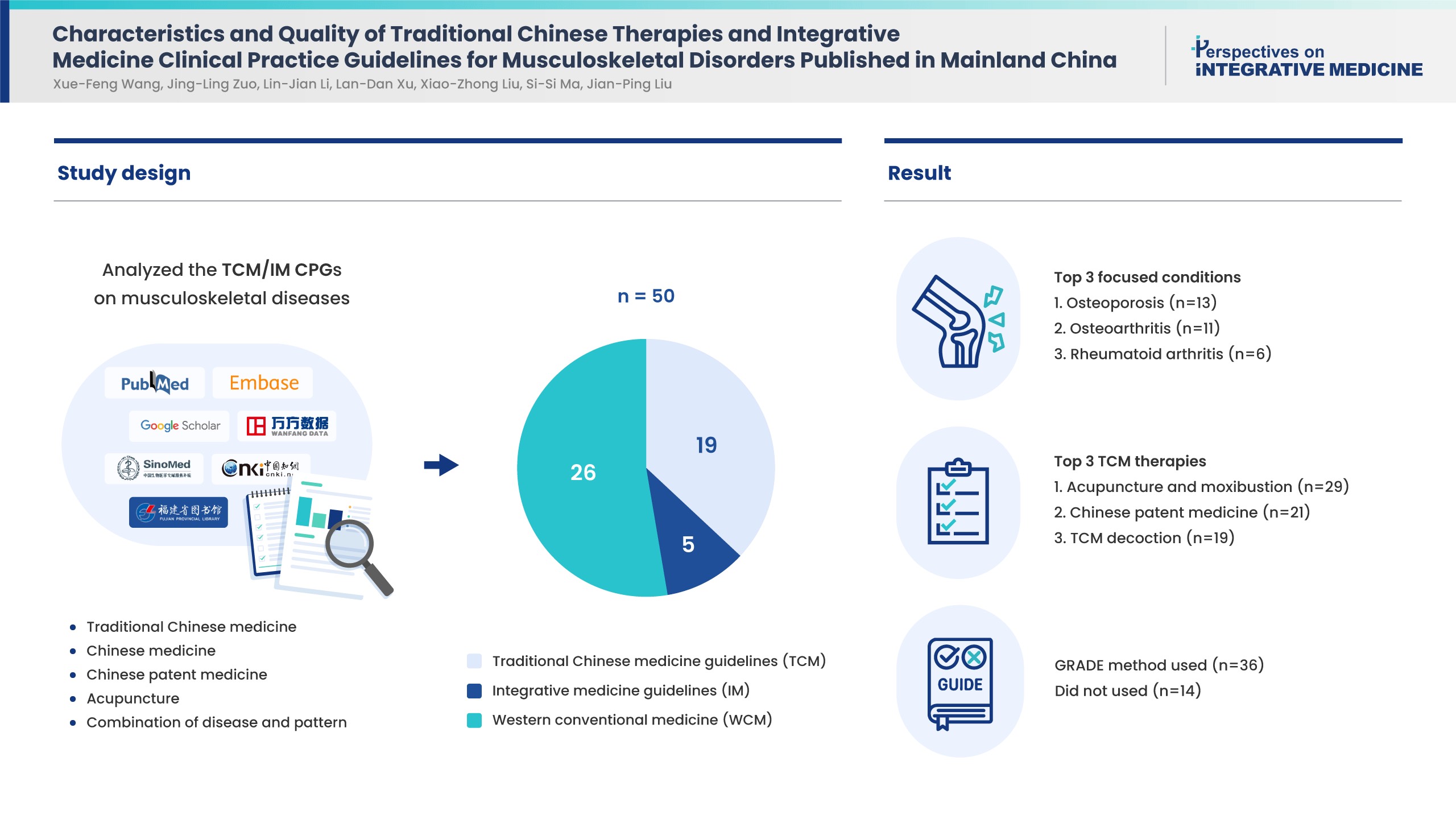- Characteristics and Quality of Traditional Chinese Therapies and Integrative Medicine Clinical Practice Guidelines for Musculoskeletal Disorders Published in Mainland China
-
Xue-Feng Wang, Jing-Ling Zuo, Lin-Jian Li, Lan-Dan Xu, Xiao-Zhong Liu, Si-Si Ma, Jian-Ping Liu
-
Perspect Integr Med. 2024;3(1):7-17. Published online February 22, 2024
-
DOI: https://doi.org/10.56986/pim.2024.02.002
-
-
 Graphical Abstract Graphical Abstract
 Abstract Abstract
 PDF PDF Supplementary Material Supplementary Material
 - Background
Musculoskeletal disorders are prevalent in adults. Traditional Chinese medicine (TCM) and integrative medicine (IM) are commonly used treatments which have clinical practice guidelines (CPGs). This study aimed to determine the characteristics and quality of these CPGs.
Methods
CPGs which recommended TCM/IM therapies in musculoskeletal conditions/diseases published in Chinese or English between January 2018 to December 2022 in mainland China were retrieved and analyzed for guideline classification, funding source, conflict of interest, and methodology. Appraisal of Guideline for Research and Evaluation Ⅱ including 6 domains, was applied to assess CPG quality.
Results
Of the 50 CPGs included, there were 19 TCM, 5 IM, and 26 western conventional medicine (WCM) guidelines of which osteoporosis (13, 26%), osteoarthritis (11, 22%) and rheumatoid arthritis (6, 12%) were the most frequent diseases. The TCM therapies recommended by the CPGs successively were acupuncture and moxibustion, Chinese patent medicine, and TCM decoction based on syndrome differentiation. Nearly half of the CPGs reported funding source (52%) and conflict of interest (48%). Thirty-six CPGs used the Grading of Recommendations, Assessment, Development, and Evaluations method to present summaries of evidence, the remaining did not report the method. Based on Appraisal of Guideline for Research and Evaluation Ⅱ scores, “clarity of presentation” scored the highest (55%), while “applicability” was the lowest (6%). No CPG was recommended without change, and 23 CPGs were not recommended.
Conclusion
The quality of CPGs for musculoskeletal conditions/diseases in China is generally low. Future CPGs should pay more attention to standardized developing procedures.
|